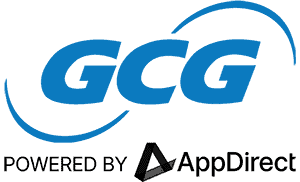Project management is a vital consideration, whether you’ve got a small initiative that needs to get off the ground, or you’re retooling a major component of your business. Because there are different needs and requirements, a number of different project management methodologies have cropped up over time. Each brings something different to the table, and there is no one-size-fits-all solution here. Our brief guide will help you choose the right project management methodology for your needs.
Top Project Management Methodologies Today
In order to choose the right methodology, you’ll need to know a bit more about what’s in use today. Below, we’ll highlight some of the high points of the more popular methods currently available.
- Waterfall: The waterfall method is one of the most commonly used today, and it takes a sequential approach to handling projects large or small. It steps down from higher levels (requirements planning, for instance), to middle levels (implementation), to lower levels (maintenance after project completion).
- Agile: Agile is perhaps the most talked-about project management methodology used today. It’s designed to be lightweight and flexible and allows progress to be made on different aspects of the project at the same time. It allows for rapid adjustments at all stages and helps to reduce the risks inherent with most projects.
- Fusion: While either the waterfall or agile approach might be used in any number of instances, a growing number of project managers are choosing to go with a fusion of the two methodologies. Generally, this uses the waterfall method during the planning and preparation process, and then the agile method for the remainder of the project.
- CPM: CPM, or the critical path method, is an older methodology that follows a step-by-step process through the life of the project. It is highly rigid and allows very little deviation from the path, but it does provide good insight into task completion and helps to determine which activities are the most important.
- CCPM: CCPM, or critical chain project management, is similar to CPM, but instead of focusing on activities within the project, it focuses on resources, instead. Buffers are built between steps within the project to ensure that there are ample resources available for each step/activity.
- Six Sigma: Chances are good that you have at least heard of Six Sigma. It’s only partially a project management methodology. Six Sigma was actually designed as a process improvement tool, although it can be used to manage projects, as well. This methodology is based solely on data.
- Scrum: You’ll find that scrum is actually related to agile project management – it’s part of the overall framework, but it can be used as a standalone management method in some instances. It’s basically a system designed to focus on prioritized tasks defined by 30-day sprints and helmed by small teams.
These are just a few of the more prevalent project management methodologies out there. There are others available, such as Prince2 or lean development (pioneered by Toyota, and adopted by companies around the world at this point). How do you determine which of these options is right for you, though?
Making Your Choice
The first step in determining the right choice for your needs is to choose a selection of project management methodologies that seem to fit your requirements. Then, you need to use the Organizational Project Management Maturity Model developed by the Project Management Institute (PMI) and the organization’s Implementing Organizational Project Management: A Practice Guide to help you arrive at an informed decision and then tailor the methodology to suit your needs.

